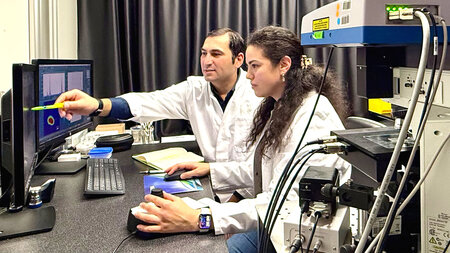Cross-sectional Working Group Modelling and Simulation (QuAG-MoSi)
Welcome to the Cross-sectional Working Group Modelling and Simulation (QuAG-MoSi)
The cross-sectional working group deals with the modelling and simulation of material and surface-specific topics such as electrodeposition, heat treatment routes, nitriding processes and service life determination.
Our group brings together scientists who are either already experts or who want to exchange ideas and receive further training in modelling and simulation. The group focuses on the following topics:
- Material characterisation and databases
- Mathematical and numerical process modelling
- Process and workpiece design based on direct simulation
You can find further information on our research services via the tabs on this website.
We are also happy to take up your R&D topics. Please contact us by phone or e-mail. We look forward to working with you!
The current research areas of the simulation cross-sectional working group include mathematical modelling, validation and simulation galvanic depositions mathematical modelling of Nitriding processes which Service life calculation components subject to residual stress and the creation of Material databases for the global storage and utilisation of experimental results.
The topics listed above are only a selection of current and past research areas. By accessing classic FE programs and creating our own solvers via MatLab, we are able to model many other topics from materials and surface engineering. In addition, we can determine material data such as flow curves, phase transformations, ZTU diagrams and Wöhler curves both simulatively and experimentally.
Below you will find a selection of our most important research topics in the above-mentioned areas.
We would be happy to advise or support you with our expertise in solving your tasks. Just get in touch with us!
The fulfilment of increasing requirements in electroplating technology for depositions on complexly shaped goods with high demands on layer homogeneity requires complex electrolyte and process development. Current developments in the modelling of electrochemical processes, mathematical algorithms and computer technology are also finding their way into electroplating technology.
To support process and electrolyte development, the working group conducts research into the simulation of galvanic depositions. Examples:
-
Simulation of current density distributions during deposition

-
Mathematical modelling and simulation of the anodic and cathodic current density during deposition
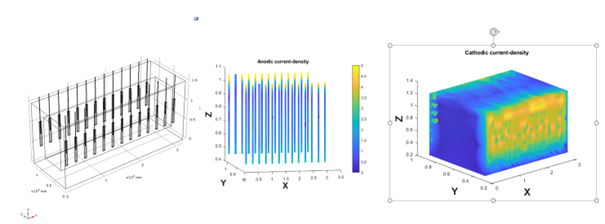
-
Simulation and determination of characteristic values for complex formation in electrolytes from titration curves
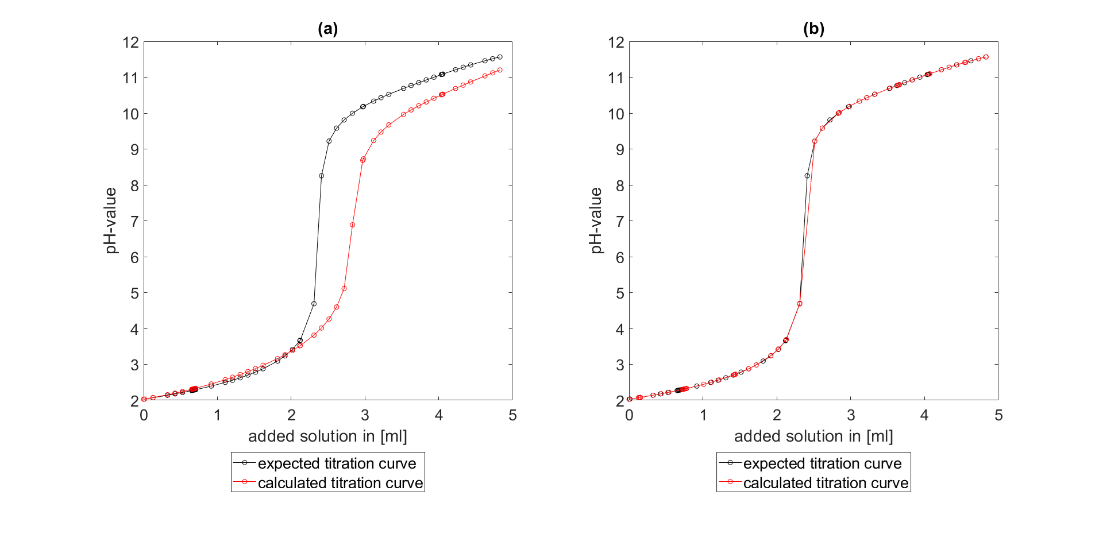
-
Mathematical modelling and method development of the processes during deposition in the diffusion boundary layer for DC and pulse plating depositions

Another important topic is the mathematical modelling and simulation of nitriding processes. The work concentrates on the mathematical modelling of the nitrogen and carbon concentration in the sample to be nitrided and the statistical correlation of the simulated concentration curves with the effect on surface hardness, nitriding depth and conversion layer structure.
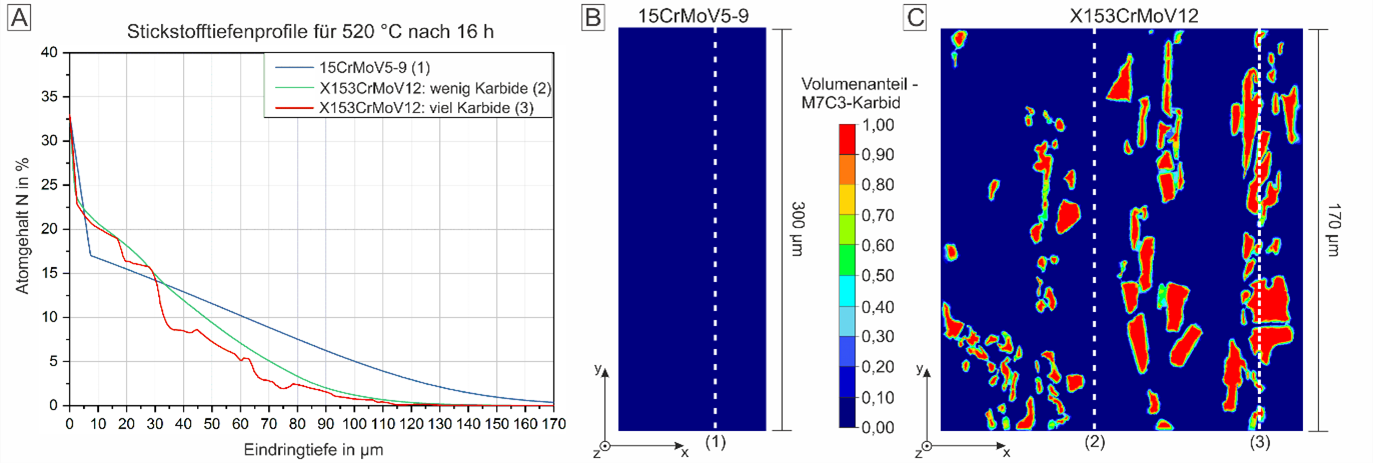
Another essential area is the fatigue of components. Thanks to the relationship between the FE programme ABAQUS and the fe-safe service life tool, it is possible to simulate the manufacturing process of a sheet metal blank by means of incremental sheet metal forming and to take into account the residual stresses caused by the manufacturing process and geometry peculiarities in the service life calculation. This allows the service life to be increased as a result of an improved manufacturing process using optimisation algorithms.
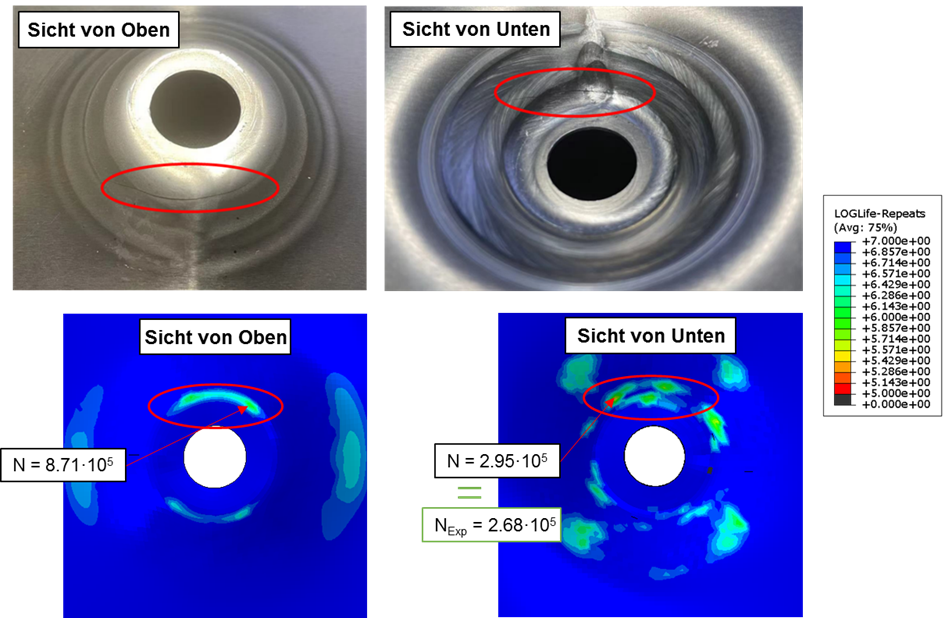
Scale is a well-known problem in the hot forming of steels or copper alloys and is given little or no consideration in simulations of rolling and forging processes. Due to the characteristics of the scale, the property profile of the iron oxide phases differs significantly from the base material. For this reason, a heavily scaled surface can influence not only the forming behaviour of the workpiece, but also the temperature and stress distribution. In one project, the scale growth kinetics and the layer structure were determined for different steels at varying temperatures and times. These data were described by mathematical models and implemented in an FE tool using subroutines. The result is a dynamically growing layer during heat treatment, which is taken into account in a downstream hot forming process.
The handling of scientific data is in a state of flux. Most experimental data, consisting of the research question, the experimental set-up, the materials and methods used and the analysis and interpretation of the results, are still traditionally recorded in analogue form.
Through digitisation, FDM systems bring this part of the information together with the already digitally available raw data, analysed data and scripts centrally in a database. RDM systems not only enable the storage and structuring of so-called research data, but also the ontological mapping of the experiment and all associated entities, such as the sample used, the measurement condition or the scientifically responsible person as the initiator of the experiment. The FDM is based on the paradigm of the
F
indable,
A
ccessible,
I
nteroperable,
R
The FAIR principle ensures the persistent storage and referencing of research data and enables further processing on different systems through the use of open-source, established data formats. The Chair of Materials and Surface Technology is currently establishing its own FDM as part of a DFG project using the FDM system "
openBIS
". This is an (open source) database that was specially developed for laboratories at research institutions.
Contact person





